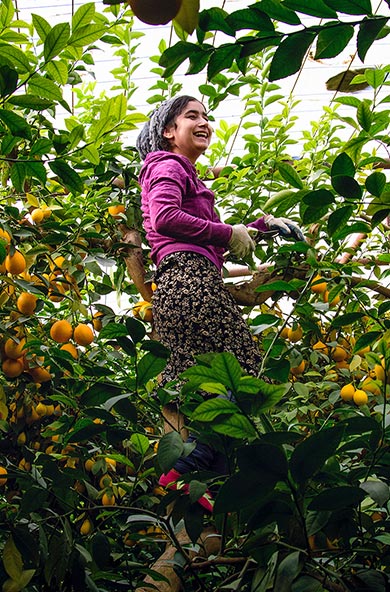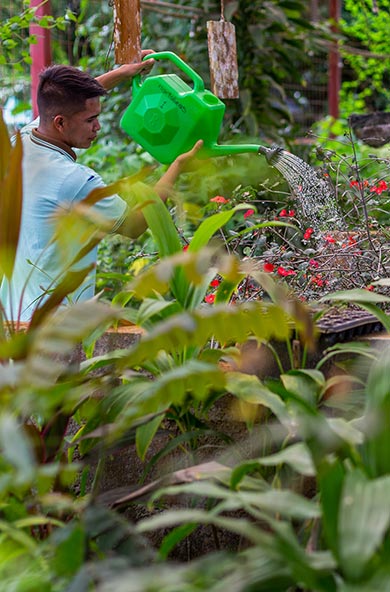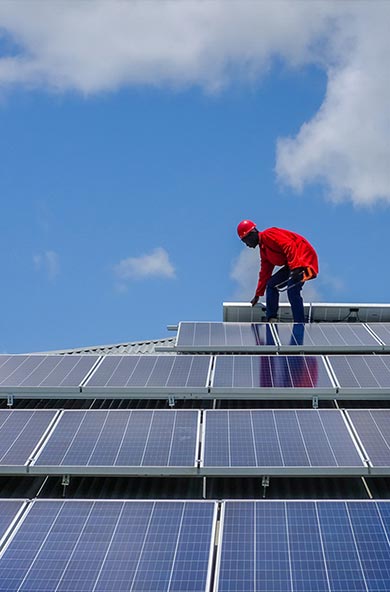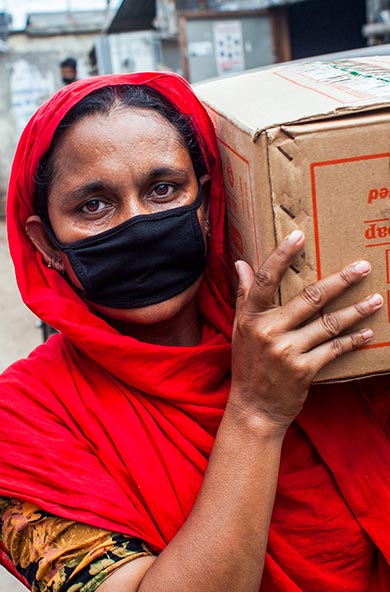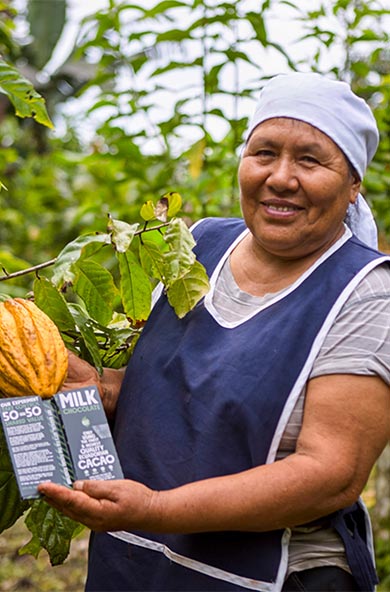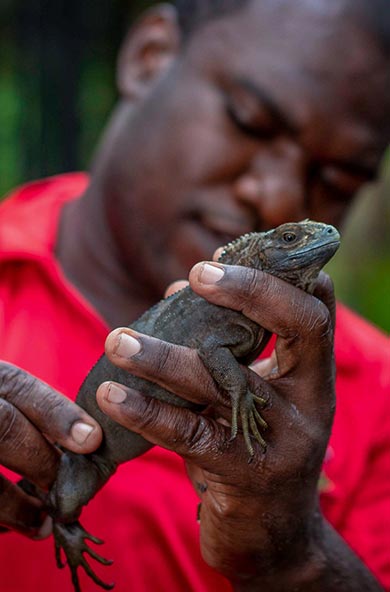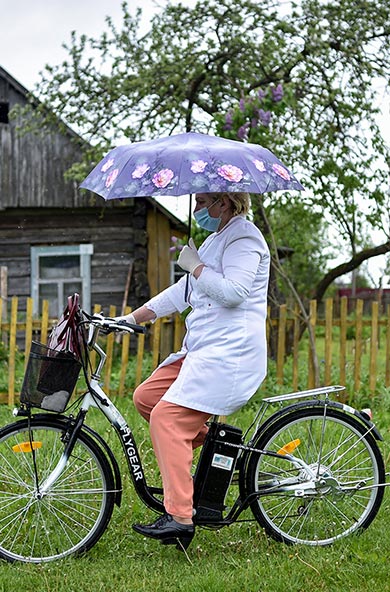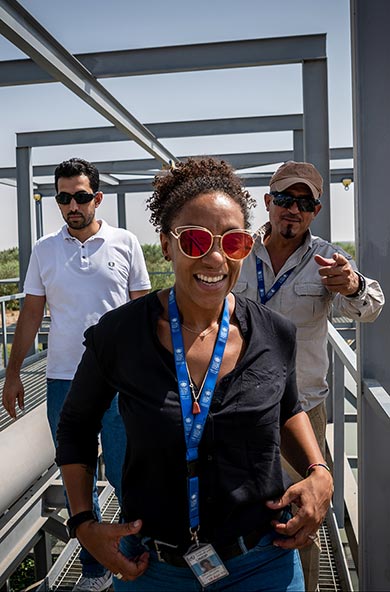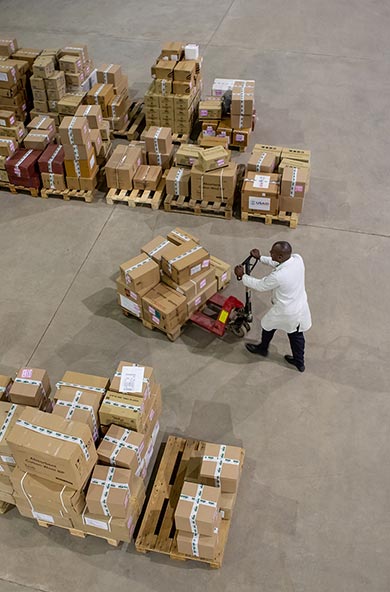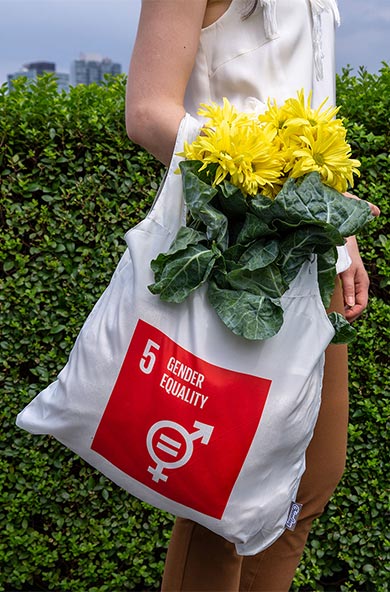
A farmer in Pakistan examines climate-resilient seeds provided through UNDP-supported livelihood recovery efforts, helping communities rebuild after devastating floods.
Effective development requires both responding to immediate needs and building foundations for lasting change. Core funding – flexible, predictable resources not tied to specific projects – enables UNDP to establish a presence in communities before disasters strike, remain engaged long after emergencies fade from headlines, and address root causes of poverty and inequality. It elevates isolated interventions into sustained impact that changes lives.
This essential support comes from committed partners including Germany, the United States, Switzerland, Japan, the Netherlands, Norway, Sweden, Canada, Denmark, Republic of Korea, United Kingdom, France, Qatar and other valued contributors. and other valued contributors. Maintaining UNDP's presence in 170 countries and territories, core funding enables us to confront today's most urgent challenges – from climate change to poverty, digital divides, and economic instability. When crises erupt, opportunities emerge, or communities seek to reimagine their futures, it ensures UNDP is ready with the innovation, expertise, and relationships that complex problems require.
Building climate action at scale
Core funding's greatest power lies in its ability to drive far-reaching progress, and nowhere is this more evident than in UNDP's climate work. Initially launched with core resources, UNDP's Climate Promise has grown into a global force for action, supporting 85 percent of developing countries in strengthening their climate plans under the Paris Agreement. This progression from pilot to global platform illustrates how core funding can multiply impact while ensuring the technical expertise and sustained engagement needed for meaningful results. It exemplifies how initial investment can spark exponential change.
The results of this approach are visible across regions and scales. In Costa Rica, UNDP's comprehensive approach meant securing a US$46.4 million performance-based payment for forest protection was just the beginning. By amplifying women's and Indigenous peoples' voices throughout the process, the initiative helped unlock an additional $60 million from other donors for conservation while strengthening local governance systems. In Vanuatu, where core funding helped initiate the Barrier Removal for Achieving the National Energy Road Map Targets project, UNDP's technical expertise is helping bring electricity to 90,000 people across 60 islands – reaching unserved populations through innovative mini-grid solutions that build local capacity.
Egypt offers a compelling example of how core funding can accelerate private sector evolution. Initial core resources supported a flagship partnership to demonstrate the technical and financial feasibility of energy-efficient lighting. As part of a national programme, these pilots spanned multiple sectors – from hospitality and retail to banking, education, and government. The dissemination of these results, coupled with technical assistance from the Global Environment Facility (GEF), mobilized over $1 billion in private sector investment. Between 2015 and 2019, this led to a nationwide shift to efficient lighting, with 300 million LED lamps installed, cutting the country’s total electricity consumption by at least 10 percent.

Core funding allows UNDP to support disaster recovery efforts, such as restoring infrastructure and livelihoods in Mozambique after the destruction caused by Cyclones Idai and Kenneth.
Bridging the digital divide
The digital revolution presents both our greatest opportunity for fast-tracking development and our gravest risk of leaving people behind. While 70 percent of SDG targets can be advanced through digital solutions, 2.6 billion people – mostly in low-income countries – remained offline in 2023. This isn't just a technology gap; it's a widening chasm in human opportunity that threatens to deepen existing inequalities.
Core funding has positioned UNDP to take a leadership role in bridging this divide. Investments from our core partners power groundbreaking initiatives like the Accelerator Labs Network, which spans 115 countries and has identified over 6,000 innovative solutions to pressing development challenges. These aren't just technical solutions – they're innovations in how communities solve problems, how governments deliver services, and how people access opportunities.
The impact is tangible in countries like Malawi, where UNDP used core resources to unlock third-party funding for digital ID systems, enabling 618,000 birth registrations, with over 95 percent of children now receiving birth certificates – opening pathways to education, health care, and economic participation. In Trinidad and Tobago, what began with a Digital Readiness Assessment evolved into a national digital strategy, ultimately securing an $8.2 million government commitment to nationwide digital advancement.
Building on this core-funded foundation, UNDP's Digital X initiative is now connecting governments with over 110 ready-to-scale digital solutions, reaching 390 million people across 190+ countries. This is development reimagined through digital means, powered by core funding's ability to invest in innovation before markets are ready and stay engaged until change becomes self-sustaining.
Mobilizing capital for development
Perhaps one of the most powerful advancements lies in how development itself is financed. Core resources have been used to help align more than $764 billion with the SDGs since 2022 through a diverse portfolio of financing mechanisms. This isn't just about mobilizing money – it's about creating comprehensive financial frameworks that engage both public and private capital in addressing development challenges.
The SDG Investor Platform exemplifies this approach for private investment, documenting over 600 Investment Opportunity Areas (IOAs) across 45+ countries and showing investors where their capital could have the most impact. Through SDG taxonomies, UNDP is creating the common language that enables investors to identify sustainable opportunities. Through thematic bonds and debt issuances, new channels are opening for capital to flow toward climate action and health care.
This approach is yielding concrete results. In Ghana and Nigeria alone, UNDP's market intelligence has identified $200 million in investment potential, with $15 million already secured for SDG-focused projects. When UNDP helps a country develop its green bond framework or establish an SDG-aligned investment pipeline, it's not just redirecting capital – it's creating enduring financial mechanisms that will continue generating development finance long after the initial engagement ends.

UNDP teams support communities in rebuilding homes and infrastructure, helping families recover amid the ongoing crisis.
Leading through crisis and recovery
The difference between immediate response and lasting recovery often depends on what was built before a crisis unfolds. After Cyclones Idai and Kenneth hit Mozambique in 2019, they left staggering devastation: hundreds dead, millions affected, billions in damage. In the aftermath, UNDP leveraged core funding to mobilize over $50 million for recovery.
Through the Mozambique Recovery Facility (MRF), established in close coordination with the Government of Mozambique, the programme has directly benefited over 1.2 million people (240,000 households) across 24 districts in Sofala, Zambezia, and Cabo Delgado. UNDP supported rapid infrastructure rebuilding while integrating "Build Back Better" principles – turning recovery into long-term resilience through livelihood restoration, micro-, small and medium-sized enterprises (MSMEs) support, and reconstruction of resilient community infrastructure and housing.
This same foundation of core-funded presence and local knowledge proved decisive in Pakistan's devastating 2022 floods, where almost 33 million people were affected and more than 2.3 million houses destroyed. Through rapid deployment of core resources and deep understanding of local contexts, UNDP helped mobilize $6.49 billion of the $10.9 billion pledged at the Geneva Conference, with over half strategically allocated to impactful recovery projects.
Working across the Sindh, Balochistan, and Khyber Pakhtunkhwa provinces in Pakistan, UNDP reached approximately 100,000 people through cash-for-work initiatives, including 48,500 women. These interventions went beyond immediate relief, focusing on reviving local livelihoods, promoting social inclusion, and restoring climate-resilient infrastructure. What began with helping 13,000 people in the immediate aftermath has grown to reach 272,000 people (131,950 women) across eight districts – creating pathways for communities to build back stronger and more resilient than before.
In Ukraine, where conflict has upended millions of lives, UNDP's pre-existing core-funded presence has made the difference between basic response and societal resilience. This foundation enabled the Country Office to maintain operations at the onset of the crisis and rapidly mobilize resources for expanded response. Through this combined effort, UNDP provided critical energy equipment benefiting 6 million people, supported the clearance of 245,000 cubic meters of debris from homes, hospitals, and schools, and helped scale up digital public services reaching 21 million Ukrainians with essential services, from Internally Displaced Persons (IDP) registration to pension payments – maintaining the fabric of society during extraordinary circumstances.
The way forward: A strategic imperative
Today's development landscape presents a profound challenge. As the issues we face grow increasingly complex and interconnected – from intensifying climate emergencies to widening digital divides and mounting economic shocks – the resources to address them are becoming more fragmented and constrained. Success in this environment requires UNDP to be adaptable enough to respond to crises while maintaining focus on long-term structural improvement; technically proficient while deeply connected to local contexts; globally networked while able to deliver in the most challenging environments.
The choice before the international community is clear. We must strengthen the foundations for transformative development, or the gap between our shared aspirations and achievements will continue to widen. Investing in UNDP's core resources means investing in proven capabilities to address humanity's greatest challenges – the expertise that converts plans into progress, the partnerships that translate promises into reality, and the sustained engagement that transforms moments of intervention into enduring change.
When donors invest in UNDP's core resources, they're not simply funding an organization – they're advancing our collective future. Together, we can build a world where communities don't just recover from crises but emerge stronger, where development gains aren't erased by the next disaster, and where the promise of inclusive, sustainable progress becomes reality for all. This is the essence of core funding: it converts global development aspirations into tangible improvements for people and planet.

 Locations
Locations